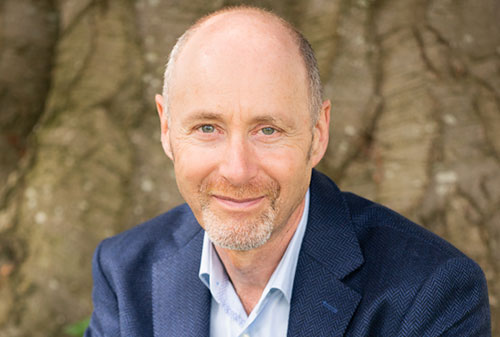
A useful realisation to have, as a professional service provider, is that people do not buy what we do.
What we do is always a bridge to something of more substance.
For example, in my business, the end result that people want is not coaching or learning how to think better, or how the mind works.
As a financial planner, your clients are not really looking for planning, financial products or the latest investment opportunity.
Simon Sinek’s (of TED talk fame) much-used quote is ‘People don’t buy what you do; they buy why you do it. And what you do simply proves what you believe.’
Of course, you must be fully behind what you do but rather than buying why you do something, people buy when their ‘why’ is compelling enough.
What do people buy?
When people buy, they are buying a better life, a solution to a problem and, ultimately, people buy feelings (such as peace of mind, security, not having to worry, etc.).
As each client will be different it is a big mistake to assume what they want.
Therefore, our ‘job’ when meeting with people is something far more important – helping them understand what it is they want. A real understanding, not a superficial one. And the only way that can ever be achieved is by paying attention with no hidden agenda.
A few years ago, I got an introduction to the Managing Director of a highly successful and rapidly growing technology retail business. He was a busy guy and I only got to see him because of a shared close mutual contact.
I remember being ushered into his office and the first thing he said was ‘Right, you’ve got 10 minutes!’
At one time this may well have phased me, and I would have got nervous and probably messed it up.
But coaching has helped me no end. More than anything it has helped me get out of my own way.
I had done my homework and gathered information about the business and the MD’s achievements, so I began a conversation about these, which he seemed to like.
Knowing I had only a few minutes an idea came to me and I asked if I could share something with him.
I got an A4 pad and drew a line down the paper and then one across, so I had 4 equal boxes.
I said to him, I bet there are things you do that you are c**p at? He said there were, and I asked what and wrote down a couple of his examples in the bottom right-hand box.
I then said that I bet there are things he is ok at, but others can probably do them just as well or perhaps even better than him. We wrote down a couple of examples in the bottom left- hand box.
The next thing I asked was about the things he did extremely well, and we wrote down a couple of examples in the top left box.
Finally, I said there were things that were his genius. These were what was building his business so rapidly and only he could do. We wrote down a couple of examples in the top right hand box.
After we had done this, which took only a few minutes, I asked him…
‘How much difference would it make to you and your company if we were to work on, firstly, getting you above the line, so you are no longer doing things you are c**p at and ok at, and only the things you are excellent at and genius at? And after this, moving you into your zone of genius?’
That conversation led to a long-term coaching engagement with the MD and also working with the board of the business.
What I have found extremely valuable is this…
It is not about having a snazzy way to wow people with what you do. I wrote a chapter in my book ‘The Client-Centred Financial Adviser’ on why giving a pitch is often a mistake.
That meeting with the MD was the one and only time I ever used the ‘zone of genius’ idea and I had not gone into the meeting with the intention of using it. It just came to me in the moment.
When working with my financial planner clients on effective client acquisition (and anything else for that matter) I use a subtractive approach.
Most approaches to improvement use an additive approach, meaning a prescription of how-to’s, tools, techniques, scripts, process, etc. These can seem very compelling but the downside, as Jamie Smart said in his book ‘Results’, is that it is like crack cocaine to our insecurities. It tends to fill up our minds, lowers our mental bandwidth and reduces our effectiveness.
The subtractive approach, instead of providing or any kind of prescriptive advice, points to how the mind works. The fact is that with a quieter mind, our mental bandwidth increases, and we respond to situations with high-quality thinking that comes to us without effort.
The power of the human mind is extraordinary when we learn to get out of our own way.
In client interactions, when our mind is clear and the quality of our attention is high, we have the in-built ability to discern the information coming at us and instinctively respond.
So, clarity of mind is your greatest asset.
What to say after ‘Hello’ is a function of being responsive to the person in front of you rather than pre-occupying your mind with what you should do or say and, therefore, lowering the quality of your attention.
To get a FREE copy of the audio ‘What every financial planner should know about getting clients’ and other exclusive content click here.


